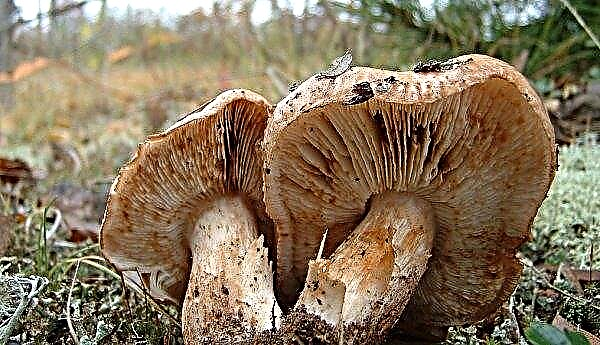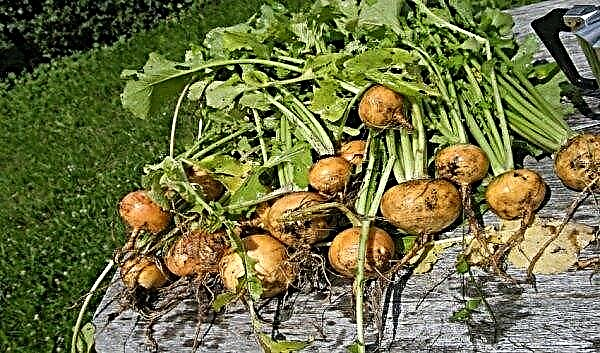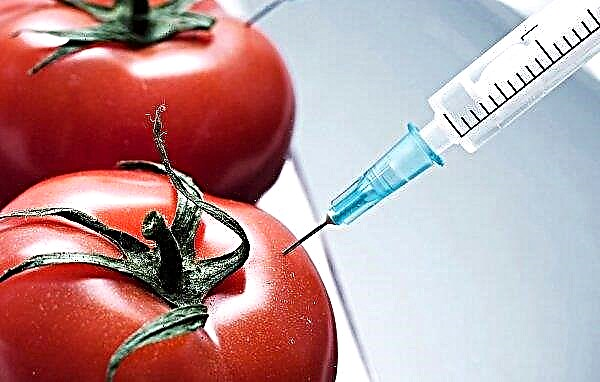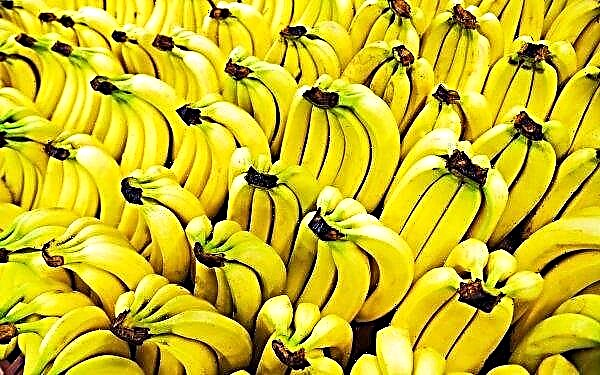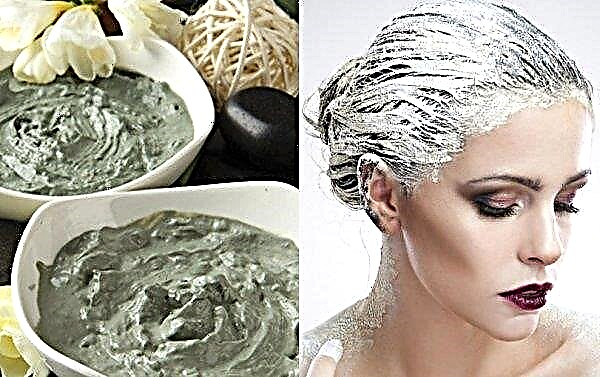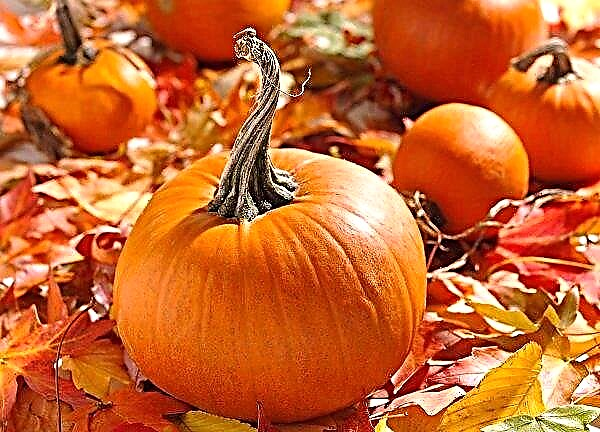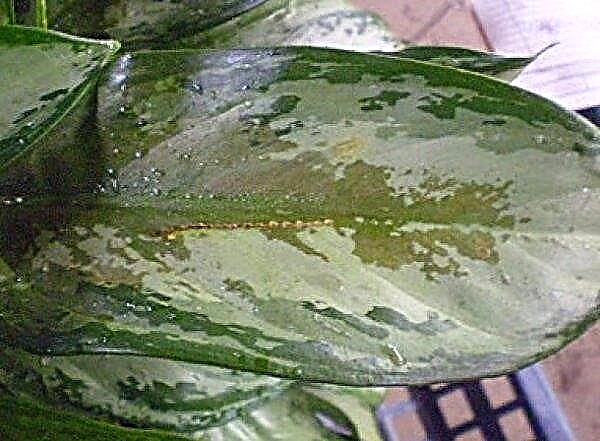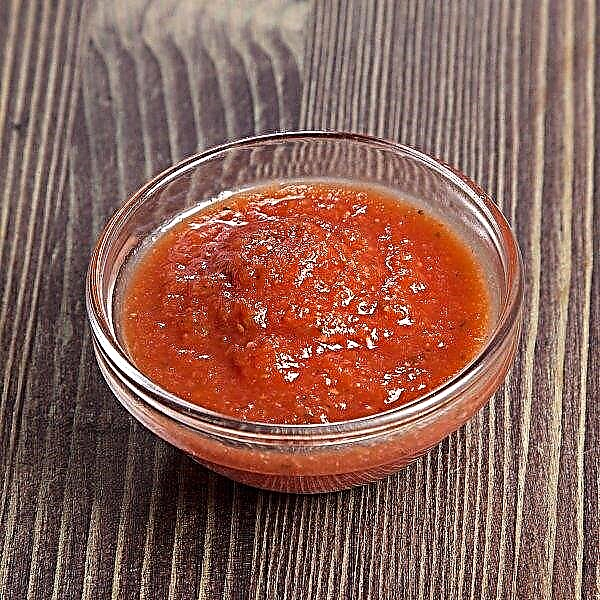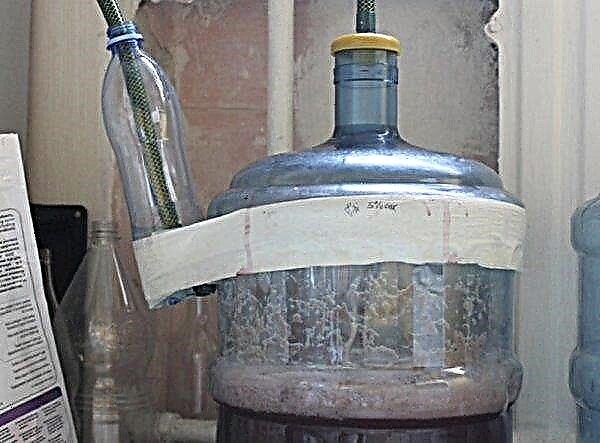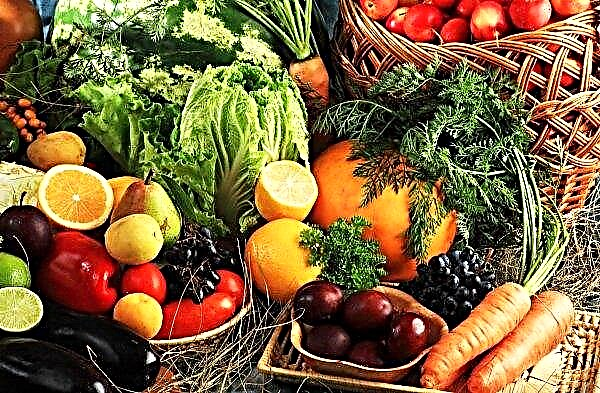Blackberry is a tasty, healthy and unpretentious berry, which is often grown in cottages and household plots. There are many varieties of it. The article contains a description and recommendations for growing a studless large-fruited berry shrub called Helen.
Helen Blackberry Variety Description
Before deciding on a particular variety, you need to familiarize yourself with its description, strengths and weaknesses.
Selection history
Variety Helen appeared thanks to the efforts of breeders in the UK. To obtain this berry, the Silvan variety and shrubs of West American selection were crossed. The author of the plant is Derek Jennings.
Did you know? Besshipny varieties of blackberries appeared not so long ago - in the middle of XX century And earlier in the people, due to the large number of thorns on the shoots, the plant was called hedgehog.
Appearance, characteristics of berries, ripening time, yield
Bushes in Helen's blackberry grow medium in size. They have long creeping shoots reaching 1.8–2 m. There are no thorns on them. In appearance, the blackberry shrub is very reminiscent of raspberries. On the shoots, many leaves are formed in the form of elongated green hearts with a matte surface. The sheet plate has a fleecy coating.
Berries ripen in the first half of July. They are large, weighing 10 g. Their shape is round. Color - black, glossy. Taste is high, rated at 4.7 points. The berries are juicy, fragrant, sweet, dense. Used for universal purposes. The yield of the variety is about 3 kg per plant.
Advantages and disadvantages of the variety
- According to gardeners who had experience growing Helen blackberries, she has such valuable qualities:
- early bearing
- dessert fruit flavor;
- the formation of large berries.
- Among the negative characteristics are called:
- low yield;
- susceptibility to chlorosis;
- the formation of a small number of substitution shoots;
- low level of winter hardiness;
- unsuitability of fruits for long transportation;
- weak immunity.
Agricultural technology
The success of growing Helen blackberries depends on the selection of a successful site for planting and planting material, proper soil preparation, compliance with planting technology, as well as quality care.
Important! Do not plant blackberry bushes in the shade, otherwise they will bear small and sour fruits, and their productivity will be low.
Seat selection
Blackberry is demanding on light and humidity level, therefore, the right place should be chosen for it. The site should be well-lit, but at the same time sheltered from the winds from the north. 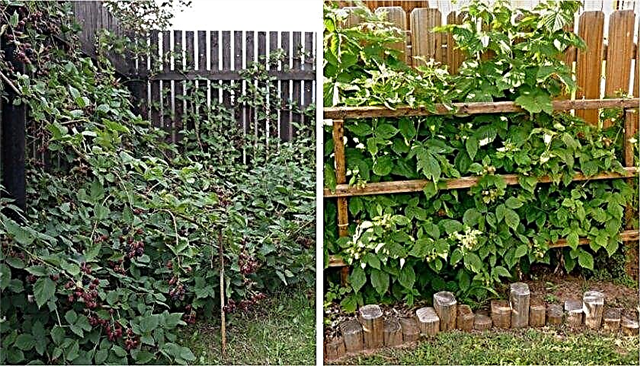 Bushes are recommended to be placed on the south or south-west side of the fence.
Bushes are recommended to be placed on the south or south-west side of the fence.
Blackberries are able to grow and bear fruit in any soil, except too acidic and heavy. Helen shows the best crops in fertilized loamy or sandy loam soils with a neutral acidity level. In the area where the blackberry is planned to be planted, groundwater should not come closer than 1.5 m. If stagnation of water periodically occurs at the landing site, a drainage layer should be laid in the landing pits.
You can plant a blackberry in spring and autumn. Since the Helen variety does not have a good level of frost resistance, it is preferable to plant in the spring so that the bushes have time to adapt and successfully survive low temperatures. The following conditions are optimal for landing:- air temperature - + 15 ° С;
- soil temperature - + 10 ° С.

Typically, such conditions have been observed since mid-April. When planting in the spring, they prepare the site in late autumn. It is cleaned of plant residues, digged deeply and added with organic fertilizing (compost, humus) - 10 kg / m², and mineral fertilizers (superphosphate, potassium sulfide) - 10-30 g / m².
Planting pits should also be dug in the fall or 1.5–2 weeks before planting. They are made with dimensions of 40 × 40 × 40 cm. They are placed at a distance of 2 m from each other and 2 m from the fence. Aisles should be 2.5–3 m wide.
Landing and care
Seedlings need to be purchased in nurseries or specialty stores. Do not take them with you, because in this case there is no guarantee of their health, as well as confirmation of the authenticity of the variety. You need to buy planting material 1-3 years old, which has a healthy appearance, a well-developed, undamaged root system, several strong shoots. It is worth abandoning seedlings with spots and growths on the cortex and root neck.
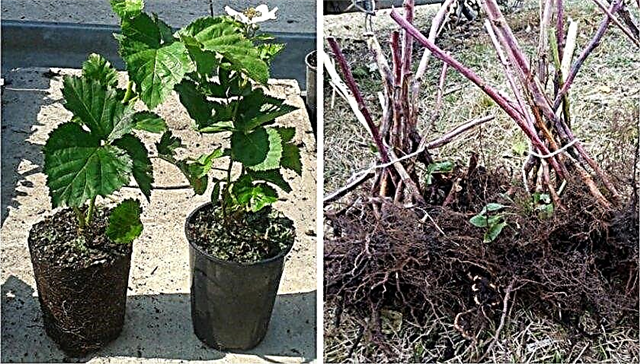 You can purchase planting material with both a closed and an open root system. Each of them has both advantages and disadvantages.
You can purchase planting material with both a closed and an open root system. Each of them has both advantages and disadvantages.
So, seedlings in containers or bags can be planted at any time of the year, except winter, and also stored for a long time. When planting, it is necessary to maintain an earthen lump so that planting material quickly adapts.
Saplings with open roots can be well examined during the purchase and see the state of the root system. Before planting, it is necessary to remove all shoots, cut off too long roots, soak them for 2-3 hours in a bucket of water and in the “Kornevina” solution.Step-by-step landing technology is as follows:
- Fill the pit for 2/3 with fertilized soil. If top dressing was not performed, then you need to make compost or humus (5 kg), superphosphate (120 g), potassium sulfate (40 g).
- Place the seedling in the center of the hole so that the root neck deepens 2-3 cm.
- Spread the roots evenly.
- Fill the hole with soil to the top.
- Tamp lightly.
- Pour 1–1.5 buckets of water.
- Trim the seedling trunk, leaving 25-30 cm off the ground.
- Cover the near-trunk zone with a layer of straw, compost or sawdust 3-4 cm high.
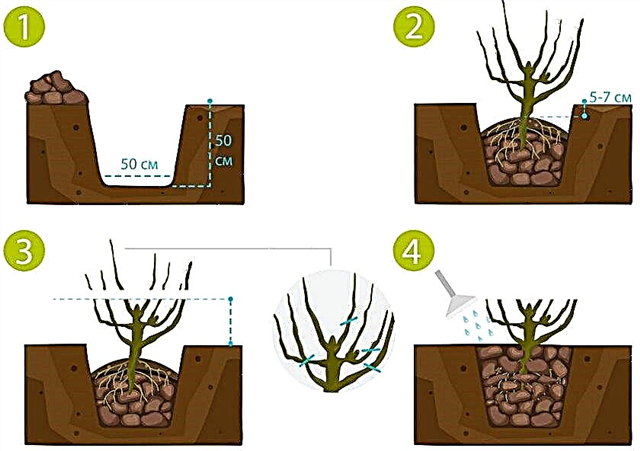
Watering the bushes is necessary only until the time of fruiting. Humidification should be carried out 1 time in 1-1.5 weeks. In dry periods, watering should be increased. Watering is not too plentiful, because the blackberry does not like excess moisture.
After irrigation, the soil in the near-stem circle and in the aisles needs to be loosened. This should be done carefully so as not to damage the roots, since Helen's blackberry is located close to the surface.
It is important to regularly remove weeds. This is necessary, firstly, to prevent the development of diseases and attacks of insects, the wearers of which are weeds. And secondly, you need to prevent weeds from taking away moisture and the nutrients necessary for normal development from blackberry bushes. It is possible to reduce the number of watering, weeding and loosening if you cover the near-trunk zone with a layer of mulch.

It is necessary to feed bushes twice: in the spring and in the fall. The first top dressing should be applied to plants that are 3 years old. In the spring, bushes need nitrogen. At this time, you can make ammonium nitrate (50 g / bush). In autumn, after fruiting is completed, it is necessary to feed the plants with superphosphate (100 g) and potassium sulfate (30 g).
Important! Top dressing is applied under the root, digging the ground. The soil should be moist, otherwise a burn of the root system may occur.
Pest and Disease Control
As mentioned above, one of the significant disadvantages of the Helen variety is its weak immunity. Accordingly, for successful cultivation, it is important to perform annual preventive spraying and regular inspections of the bushes in order to notice the onset of the disease in time and begin treatment.
Most often, blackberries are affected by the following diseases:
- Mosaic. It is manifested by the appearance of light green, yellow spots on the leaves. Branches become thin. Over time, they stop growth. Mosaic treatment does not exist. Preventive measures — the use of healthy planting material, autumn soil cultivation — prevent disease.
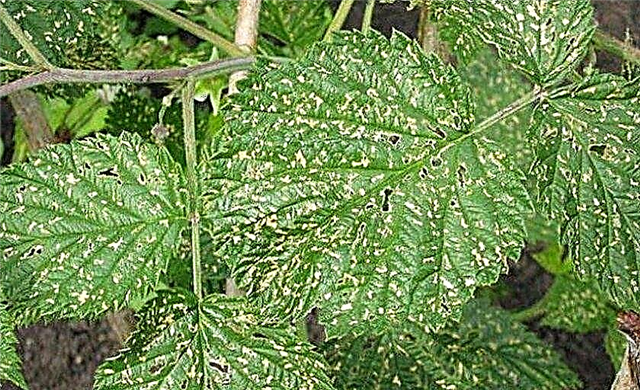
- Anthracnose. The infection is indicated by the appearance of grayish spots with purple edges on leaves, branches, fruits. In order to prevent the disease, in the early spring three times are treated with copper sulfate, "Fundazolum".
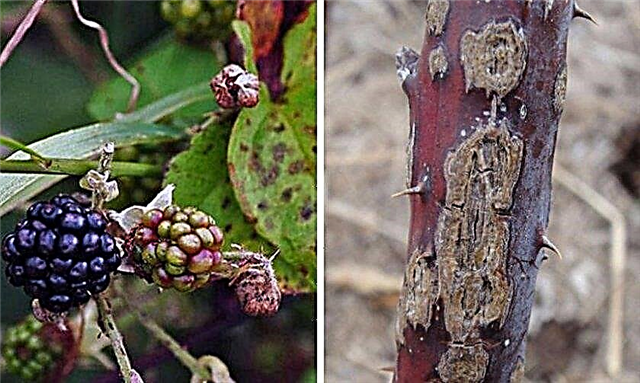
- Septoria When this disease is affected, brown spots are formed on the leaves, framed by a dark border, their drying, decay of the fruit, growth retardation. In order to prevent septoria, plantings are sprayed with copper sulphate and Fundazol. The bushes are treated 3 times in the spring with interruptions of 10-14 days.
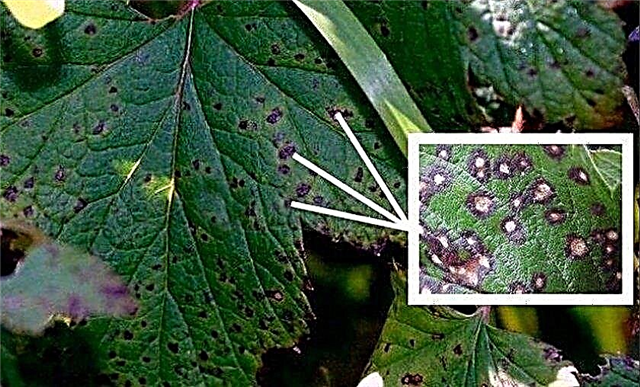
- Root cancer The main symptoms are the formation of growths on the roots, the root neck, on the bases of the branches, yellowing of the leaves, stunting, decreased productivity. The disease does not respond to treatment. Sick plants must be uprooted and burned. For prevention, spraying is used with Abiga-Peak, Oksikhom, Bordeaux liquid.
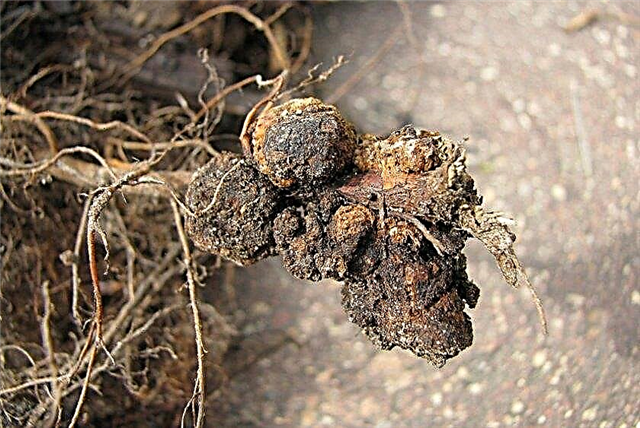
- Curly hair. Most often found on two-year-old shoots. The disease is manifested by growth retardation, wrinkling of leaves, bending of their edges down, deformation of flowers. Like any disease caused by the virus, curls are not treated.

- Gray rot. The main symptoms are gray spots on terrestrial plant organs. The fruits are covered with a gray coating with a fluff, become tasteless. Fight against gray rot with fungicides "Rovral Aquaflo", "Teldor". It is important to ensure that you do not flood the landing.
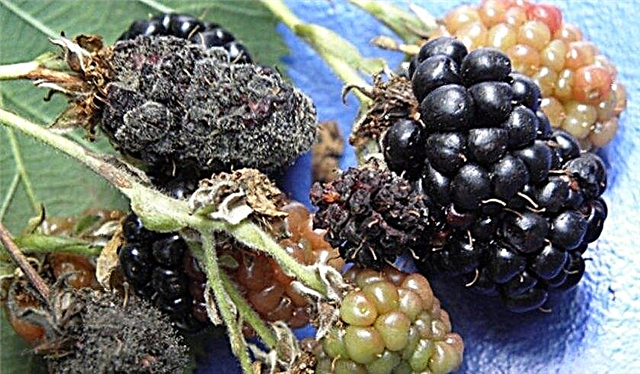
- Spider mite. The presence of this pest is indicated by yellowing of the leaves and the appearance of cobwebs on the ground. The insect gradually drinks juices from the plant, leading to a halt in its growth and death. In order not to let the parasite into the garden, it is necessary to make three times the treatment with “Aktavit”, “Fitoverm”, maintaining the intervals of a week.

- Blackberry tick. This insect infects the fruits, as a result of which they do not fully ripen - they do not turn black, but remain red. Taste qualities in them are significantly reduced. In order to prevent the pest from harming the blackberry plantings, it is necessary to spray the bushes with Envidor, Tiovit Jet, Bi-58 before buds open.
- Raspberry stem fly. Damages shoots and stems, biting into them and leaving moves. Damaged branches must be cut and burned immediately.

- Raspberry beetle. It harms leaves, buds, flowers and berries. Its larvae gnaw holes. The fruits rot in the course of their harmful activity. It is possible to prevent a pest from entering the garden by deep digging in the spring and autumn, dusting with wood ash and tobacco dust, treating with Actellik, Iskra, Fufanon.
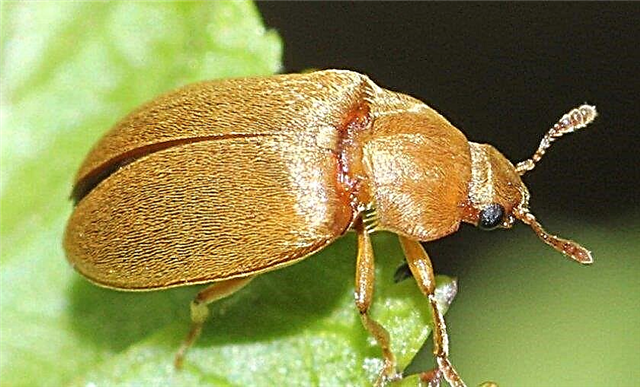
Trimming and garter bush
Trimming bushes should be done 2 times a year - in spring and autumn. In the spring, sanitary pruning is needed, during which all dry, old, sick, damaged, deformed branches are cut. After fruiting, it is necessary to remove the fruiting shoots and prune young branches by a quarter.
Since the shoots at Helen bushes are creeping and long, they need to be tied to a trellis. The wire must be pulled in 3 tiers - at a height of 70, 120, 170 cm. Garter is carried out in a fan manner. Lateral branches need to be tied to the lower wire, central - to the middle and upper.
Preparing for the winter
Helen bushes require mandatory preparation for winter. Before the onset of frost, after autumn pruning, shoots must be removed from the trellis, twisted, laid on the ground or in pre-dug trenches and covered with 2-layer agrofibre.
 Remove the shelter should not be earlier than mid-March, after the snow has completely thawed. Removal is carried out gradually, allowing plants to get used to new conditions.
Remove the shelter should not be earlier than mid-March, after the snow has completely thawed. Removal is carried out gradually, allowing plants to get used to new conditions.
Harvesting and transportation of the crop, shelf life of berries
It is necessary to start collecting fruits for fresh consumption when they are fully ripe - they will grow to the size indicated in the description, they will become black, sweet and soft. Berries that are planned to be processed or transported must be harvested in a state of technical maturity - when they are of the right weight, black, but still a little hard and with pronounced sourness.
Blackberries are cleaned manually. It is carefully torn off the branches, separating from the stalks. Once the berries are picked, they need to be cooled in a short time. They cannot be kept warm in the sun: the shelf life period will be significantly reduced. The berries are stored in a cold temperature: in the refrigerator, in the cellar. When stored in the refrigerator, they are suitable for use for 3-4 days. If storage is carried out at a temperature of 0 ° C and a humidity of 90%, the shelf life is extended to three weeks.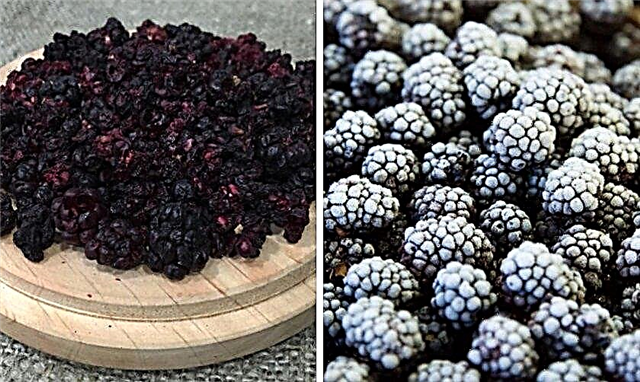
Frozen food is suitable for food for one year, dried - for two years. You need to remove the blackberry in a small container. Pouring and passing berries should be avoided. The Helen variety does not tolerate transportation well: the berries are quickly crushed and let the juice go.
Did you know? People knew about the benefits of blackberries 2 thousand years ago. The first mention of the beneficial properties of the berry is contained in the writings of the ancient Roman physician Dioscorides.
As a summary, we note that the Helen variety has a number of positive characteristics, such as delicious berries, unpretentiousness in care, early fruiting. It is great for growing on a personal farm. However, due to the low yield and poor transportability of the fruits, the Helen blackberry is not suitable for industrial plantings.
Reviews
Helen is a shipless, early, large-fruited variety with sweet, fragrant berries of the original taste. Rich aroma, excellent dessert taste and early ripening - these characteristics are inherited, I think, from Sylvan, but the second variety involved in the cross is unknown. Helen inherited a nonship from him.










